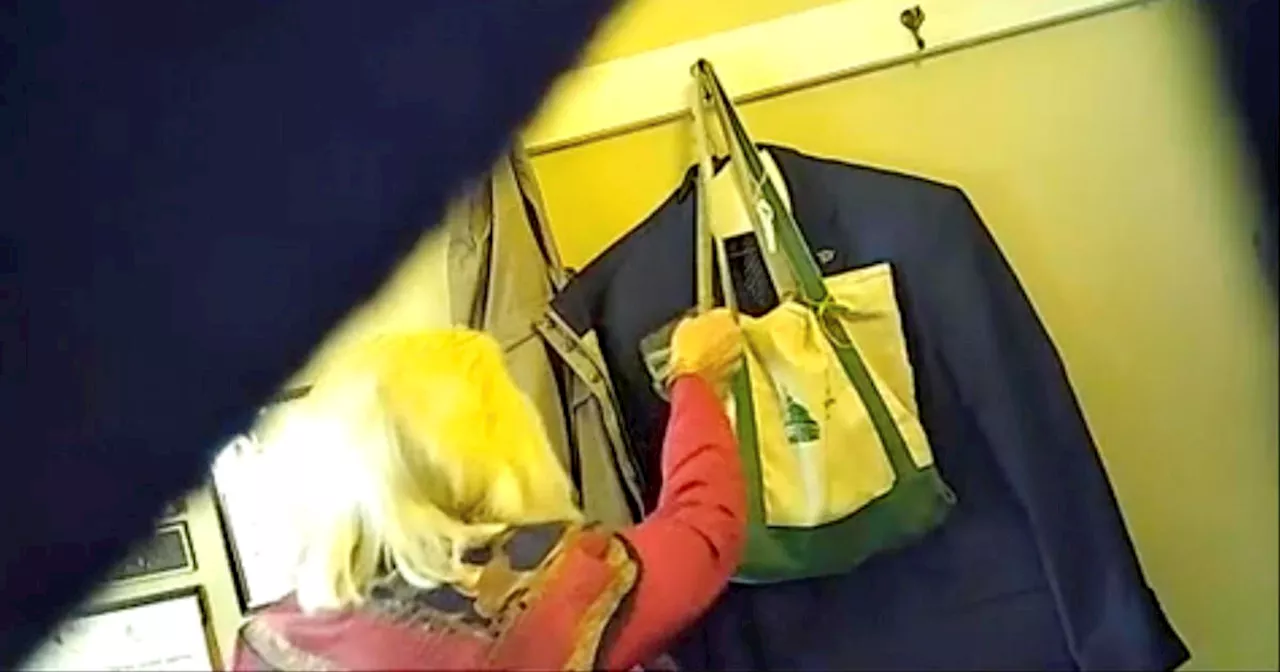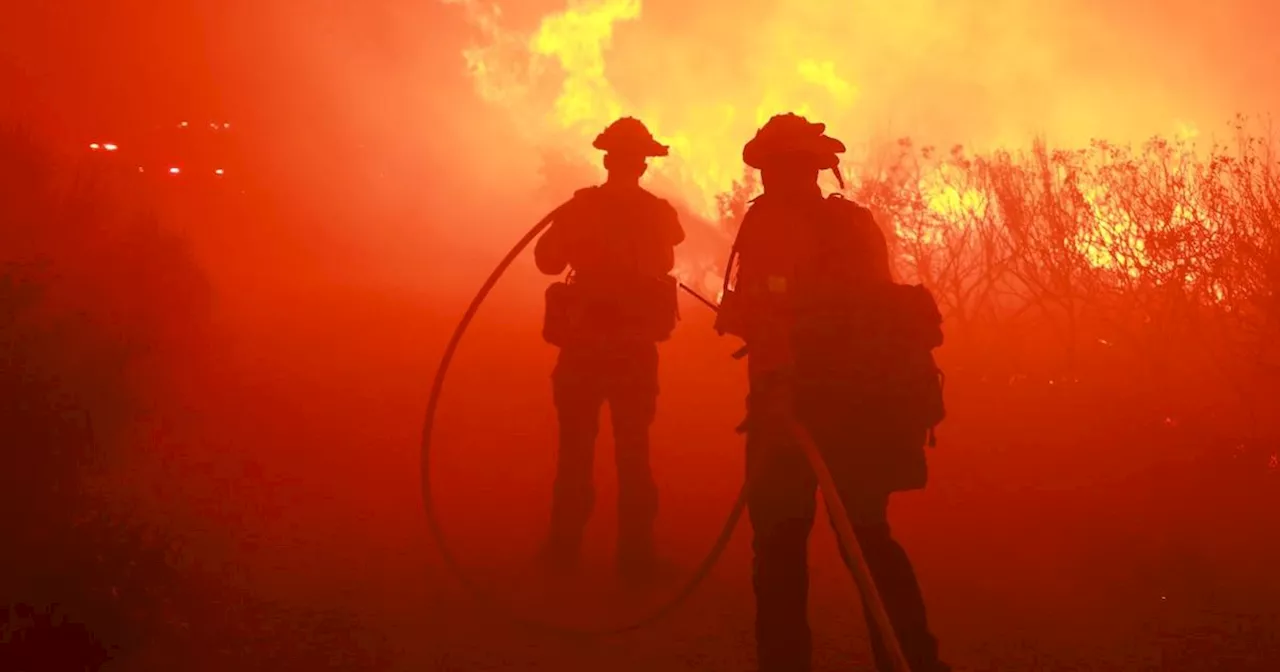Interviews with flood survivors, state and local officials and current and former FEMA employees reveals a pattern of administrative bloat at a federal agency that, to many Vermonters, seemed less interested in providing assistance than in finding ways to reject requests for aid.
Anne Ward stands in front of the former headquarters for Mosaic, a sexual violence response and prevention agency in Barre City that flooded in July 2023. Ward told Vermont Public that she gave up on seeking assistance from FEMA for flood-related damage due to insurmountable bureaucratic hurdles at the agency.
Her excitement was fleeting. Ward said it was shockingly difficult to get any guidance on how to apply for assistance for her small organization. “One of the things that I learned early on in the flood was that anybody that you talked to had one tiny piece of the pie and you needed to talk to at least 12 more people about the exact same thing,” she said. “And you would get different answers depending on who you talked to.”
And their stories read as an indictment of a disaster-response apparatus that has failed — catastrophically, in some instances — to repair the harm done by a natural disaster that caused more than $1 billion in damage statewide.Public records requests that show the agency had, as of March 4, incurred administrative costs of $78.3 million on a recovery mission that’s distributed about $43 million in individual assistance to flood survivors.
“FEMA’s Individual Assistance programs help eligible individuals and households who have uninsured or under-insured necessary expenses and serious needs caused by a federally declared disaster,” Stevens wrote. “The assistance is meant to return a home to a safe, sanitary and function residence. Federal assistance cannot duplicate the benefits provided by other sources, such as insurance, and cannot fully pay for all disaster losses caused.
“I just want everybody here to know that FEMA is going to be here to support Vermont, to support the governor and all of your needs,” Criswell said at Vermont’s Agency of Transportation headquarters in Berlin on July 12. “As you transition from response and into the recovery phase, we will be here with you.”
A person uses a kayak to navigate downtown Montpelier after flooding on July 11, 2023. City officials used an emergency health order to close the downtown area. Employees inside FEMA say they’re concerned not just about how much the agency is spending on itself, as compared to Vermonters in need. They are also alarmed at how little FEMA is accomplishing despite all its internal spending.
The person, who’s been with the agency for several years, said the staffing overload stems from an organizational structure in which employees are permitted to undertake only a very narrow range of job duties. “Every day, more than 22,000 emergency managers work to make our nation safer, stronger and more prepared,” he said. “FEMA works closely with state, local, territorial and tribal partners to support their response and recovery process, the length of which varies based on the unique circumstances of the particular event.”
“What kills me is we spend so much money on the administrative costs. Shouldn’t we be doing everything possible to give survivors more money in their pockets?”Records obtained by Vermont Public showed that, on 37 separate days, between July 22 and Oct. 7, 2023, FEMA had more employees staffed at DRCs than they did flood survivors who showed up for assistance. On at least 14 occasions, twice as many staffers spent their days at DRCs as survivors who visited.
“What kills me is we spend so much money on the administrative costs. Shouldn’t we be doing everything possible to give survivors more money in their pockets? The average , it’s a pittance,” they said. “Then they’ll go back to, ‘Oh we’re just giving them a hand up, not a hand out.’ And I understand it. We can’t be a replacement for insurance. I understand it totally. But it still seems like we’re not doing enough to maximize the money that goes in survivors’ pockets.
The person, a Vermont resident who joined on a 120-day contract, said they realized quickly that the job would not offer the meaning and satisfaction they’d anticipated. The former employee said one trip to perform a damage assessment on a public building in Montpelier was emblematic of their experience.
FEMA told Vermont Public in a written statement that when the agency deploys to disaster sites, “we do an analysis of the area to ensure that the deployment of FEMA personnel will not impede local residents’ access to hotels.” Road closures prevented them from making it back home until the next day. When they finally arrived, their land was so saturated that there wasn’t much they could do about the flooded farm, so they
As volunteers mucked out basements and comforted shellshocked neighbors, Carpenter said they eagerly awaited the financial assistance they assumed FEMA would deliver to survivors. Carpenter said it became very clear, very quickly that FEMA, even when it had several hundred employees in Vermont, lacked any sort of “game plan” for how to go about the task of finding people that had been displaced, and getting them the information they needed.Local volunteers with experience navigating thick bureaucracies stepped in to serve as unofficial case managers for confused survivors.
As part of her job, Marcelino worked hand in hand with survivors as they tried to navigate the individual assistance process.on the phone, and hours on a computer trying to document all the losses, all the receipts you might need, photographs of damage,” she said. “We realized that FEMA … is sort of up to interpretation by the employees. Meaning I could submit something and have a conversation with one FEMA employee and have an understanding with that employee.
That confusion stems from an approach — sometimes referred to as “reject and appeal” — that would lead any reasonable flood survivor to assume that their request for assistance had been turned down. For Vermonters who do summon the wherewithal to proceed with an appeal, the process can be vexing. Erika Johnson, a lawyer at the nonprofit Legal Services Vermont, has been helping lower-income residents navigate the bureaucracy.
In a letter to FEMA last month, all three members of Vermont’s congressional delegation said the agency’s responseand cited the application process specifically. FEMA updated its individual assistance determination letters in 2022 following a Government Accountability Office report that concluded the language “did not comply with federal communication guidelines.”Sen. Bernie Sanders tours flood damage in Barre on July 12, 2023.
Balint said the application and appeals processes are especially problematic for states that don’t have the municipal infrastructure to aid residents as they try to recover. FEMA said administrative costs related to its response to the July floods “are in line with other disasters of similar magnitude.”
Martin said that, based on his research, the intensity of FEMA’s compliance efforts is out of line with the threat posed by people trying to game the system. It’s a phenomenon that Martin has dubbed “oversight overdose."Last summer’s floods marked the first time since Tropical Storm Irene, 2011, that Vermonters were eligible for individual assistance from FEMA.
Volunteers carry flood relief supplies into the Hedding United Methodist Church in downtown Barre after the July 2023 floods. With so many Vermonters and aid workers frustrated with FEMA’s process, and so many households still damaged, the monumental task of addressing the still-unmet needs of flood survivors has fallen largely on the shoulders of local, volunteer recovery groups. They say they’re not getting the help they need to accomplish the mission.
There are about 10 long-term recovery groups that have formed in flood-hit communities around the state. And the hundreds of cases they’re managing often represent the most severe flood-related situations. “It kept me up at night before I saw the data, thinking that there was probably folks that we hadn’t reached,” she said. “And it’s devastating to learn that I was right, and tragic to hear the stories that keep coming in.”
United States Latest News, United States Headlines
Similar News:You can also read news stories similar to this one that we have collected from other news sources.
 FEMA flood insurance: Comparing the pros and cons of flood insurance optionsWhat's right for you? Private insurance v. FEMA flood insurance
FEMA flood insurance: Comparing the pros and cons of flood insurance optionsWhat's right for you? Private insurance v. FEMA flood insurance
Read more »
 Vermont lawmaker apologizes for repeatedly drenching colleague’s bagA Democrat said his bag had been mysteriously soaked with water over the course of five months. A Republican from his district admitted to it this week.
Vermont lawmaker apologizes for repeatedly drenching colleague’s bagA Democrat said his bag had been mysteriously soaked with water over the course of five months. A Republican from his district admitted to it this week.
Read more »
 GOP lawmaker from Vermont caught on video repeatedly dumping water into her Democratic colleague's bagJim Carroll set up a spy camera and captured Mary Morrissey pouring water into his bag. He said it was soaked almost daily.
GOP lawmaker from Vermont caught on video repeatedly dumping water into her Democratic colleague's bagJim Carroll set up a spy camera and captured Mary Morrissey pouring water into his bag. He said it was soaked almost daily.
Read more »
 Heat Waves Deserve Disaster Relief from FEMA, Petition ArguesPlaces beset by heat waves should receive FEMA disaster funds just as those hit by hurricanes or flooding do, labor unions, green groups and public health advocates argue in a new petition
Heat Waves Deserve Disaster Relief from FEMA, Petition ArguesPlaces beset by heat waves should receive FEMA disaster funds just as those hit by hurricanes or flooding do, labor unions, green groups and public health advocates argue in a new petition
Read more »
 Vermont GOP lawmaker apologizes to Democrat colleague for pouring water in his bagRepublican Rep. Mary Morrissey publicly apologized on the House floor for repeatedly pouring water into Democratic Rep. Jim Carroll's tote bag
Vermont GOP lawmaker apologizes to Democrat colleague for pouring water in his bagRepublican Rep. Mary Morrissey publicly apologized on the House floor for repeatedly pouring water into Democratic Rep. Jim Carroll's tote bag
Read more »
 FEMA urged to add extreme heat, wildfire smoke to list of disastersHeat kills more Americans than hurricanes, floods and tornadoes, yet federal aid doesn't flow as with other disasters.
FEMA urged to add extreme heat, wildfire smoke to list of disastersHeat kills more Americans than hurricanes, floods and tornadoes, yet federal aid doesn't flow as with other disasters.
Read more »
